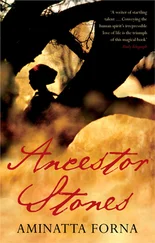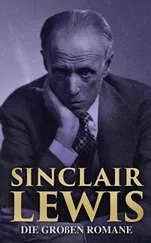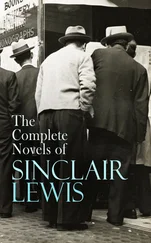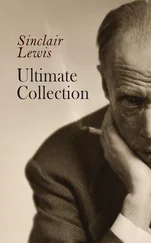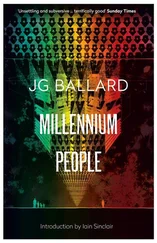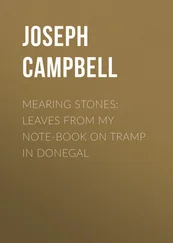Ollie and Kaporal, saucepan smouldering with the remains of burnt spaghetti sauce, had gone for a curry, leaving Arthur Norton’s prints pegged out to dry in the shower room. A brief note gave nothing else away. We moved, down the corridor, to Marina’s flat.
My head was aching, my mouth an asbestos sandwich. Marina had a bottle of Calvados. She kissed me again. Said that she’d slip downstairs to join the others, a coffee, so that I could decide, in private, what do about the Peruvian photographs. Give them, unseen, to Ollie: a future conceptual project? Or exploit them? If not as a conclusion to my abandoned novel, then as the start of something fresh. Like the Conradian postcards I found in Brick Lane Market and printed (as endpapers) for my novel, Downriver . The moment those negatives were transformed, they abdicated their power. Their hold over me.
The Calvados, with its lovely afterburn, did the trick. I mellowed. Marina had a studio flat, smaller than mine, but better organised. Her neat typescript had been left on the Ikea desk. Nothing to consider: read it . 214 pp., the length I’d aimed for, back at the start. Three sections (bright-yellow interleaves). Everything my chaotic novel failed to achieve: discipline, reason — inevitability. Themes stated, interrogated, resolved. She had a nifty title (like a white paper from the LibDems): The Middle Ground .
Hastings as Hastings. Her argument was shaped through unforced biographies of three men: John Logie Baird (first television signal), Fred Judge (photography and its limitations), Keith Baynes (view from a single eye). There were no awkward authorial intrusions, Marina was seductively present in every line. Her tone, her sureness of touch. The anecdotes. She left space around her characters that allowed readers to fill in details according to taste. Playful severity. Scholarly rigour without a blitz of footnotes. It was a fine thing, this book. I pictured the finished object with a dust-wrapper based on one of Fred Judge’s fading bromoil nocturnes. Text double-spaced. Generous margins. Good cream paper. Dark-blue cloth. Stitched, not glued. Minimal cover copy (gloriously vague). Justified hyperbole from Susan Sontag, Anita Brookner and Simon Schama: in boxed quotes.
Recommended summer reading, pick of the year. Fame, prizes, respect. And more: a job well done.
John Logie Baird (born in the year of the Ripper murders, down from Helensburgh on the Clyde, unwell) scarcely registers where he is. An orthodox Scottish CV: poverty + the go-getting push of the permanently disappointed man. He’s touchy, upset when journalists talk of ‘seeing by wireless’. He picks this sleepy town with its crumbling sandstone cliffs (and, in future time, famously bad TV reception) as the place to attempt the first transmission.
Who will help him? Who is President of the Hastings Radio Society in 1924? William Le Quex: author, Ripperologist, spy, faker. (Marina doesn’t tell you much about Le Quex, but I can’t help myself. He’s the kind of forgotten man who would, if the fellow hadn’t turned up with a bulging suitcase, have invented Baird and his ‘Shadowgraph’ disc: primitive science fiction in a striking pictorial wrapper. Sold on railway stations in time of war.)
The threat to England and the British Empire from alien invasion (yellow faces, Mongol hordes) was a festering obsession: 200 books credited to this Londoner who died in Belgium. According to his faithful admirer, N. St Barbe Sladen, Le Quex never grasped the nice distinction, if any, between fact and fiction.
His publications include: Beryl of the Biplane, The Bomb-Makers, The Bond of Black, The Broadcast Mystery, The Chameleon, The Closed Book, The Death-Doctor, The Double Shadow, An Eye for an Eye, The Spider’s Eye, Three Glass Eyes, The Voice from the Void .
Future war, radio waves, Whitechapel Murders and the green rays of marine sunsets: Le Quex was a card-carrying Nostromoner . He had himself appointed to the honorary consulship of the Republic of San Marino. If anyone had the time to wade through the morass of his paranoid fictions, the secret history of the period would reveal itself. He stood at Baird’s shoulder when that first transmission was made.
Sound becomes picture: ‘A curious high-pitched whistle, with a hint of regular and very rapid interruptions.’ A large veined disc that looked like god’s eye, spinning spinning, above a base made from coffin wood.
Marina was smart enough to spurn the Le Quex digression, but she rescues Baird and the era of backroom experimentation, driven amateurs. Rescues the man. And she is just as sympathetic to Fred Judge with his hunger for ‘views’.
Her essay, measuring Fred’s nightstalking of London against a project undertaken in Hastings by the Hackney-based photographer, Effie Paleologou, did justice to two very different sensibilities. Judge, inspired by Alvin Langdon Coburn, wanted something more than commercial success, a definitive catalogue of the picturesque. He wanted: art. Loss of control, breakdown — the unexpected. Paleologou read Hastings as a theatre set: threads of rope, cobbled streets illuminated with puddles of artificial light.
‘All eyeballs and head,’ wrote Liz Kent in her introduction to the Paleologou exhibition at Hastings Museum and Art Gallery. ‘The light is mute, the reddish cast of the colour so peculiar that we are left wandering through the image, asking ourselves: what exactly is going on?’
The Keith Baynes meditation, which concludes The Middle Ground , carries the three movements back to their starting point, the view from Cunard Court. Marina is working from the room that once belonged to a gentleman artist. She discusses Max Beckmann and his Italian marine paintings (coded biography, Kabbalah, premonitions of war); and argues that this lesser thing, Baynes’s Francophile relish for sunlight on water, yachts, fishermen, is not to be spurned. There is a passage to be navigated into the ‘middle ground’, a corridor he neither delineates, nor understands. A space where lives can be lost. After improvisation and analogy, Marina comes to Baynes’s last years, more or less forgotten, removed to Warrior Square: the man with one eye.
I had emptied most of the bottle. This book would make her name: Ruth Alsop . There it was in red letters on the half-title of her script. I was already mapping out an essay in her support. Would that be too intrusive? Drooling hack jumping on the bandwagon of a livelier intelligence. You had to be very careful, these days, who you puffed, or who you chose to libel. My fiercest critics were my oldest friends.
Postpone the decision, my trip downstairs. Handle the objects on Ruth’s desk. Postcards: Baynes, Judge, Beckmann ( The Bark , 1926). The invitation to the Paleologou show. The Remington on which she had, so laboriously, copied out my aborted tales. Maps. Books. Stones from the beach.
A tin with a paper label, yellow and blue, picture of the sphinx. Finest Handmade AMBAR CIGARETTES. Philip E. Mitry. At the Anglo-American Bookshop Opposite Shepheard’s Hotel. Cairo, Egypt . I had to sniff the interior. Photographs. Preserved. The lion shot, myself as a child, in Paignton. A photo-booth strip, Ruth mugging as I frown. A semi-tropical garden carved from the cliff: Fairlight! Ruth with a child, a girl. Mocatta’s daughter. Ollie.
The story made too much sense, it hurt. A stone in the heart. Ruth with Mocatta. The flat in Cunard Court as pay-off, benevolent banishment. Child lost. Twice. My daughter and the other, the one Ollie was carrying. Fathered, head in the ditch at Thurrock, by Reo Sleeman. Resolution as pain postponed.
I couldn’t go back to my flat, the darkroom, the drying prints. That was over, a discontinued and discredited narrative. I couldn’t join the characters in the curry house. Relationships were too complex now — with Kaporal as a kind of son-in-law and Ollie a daughter, lost, carrying a child that wasn’t mine.
Читать дальше




